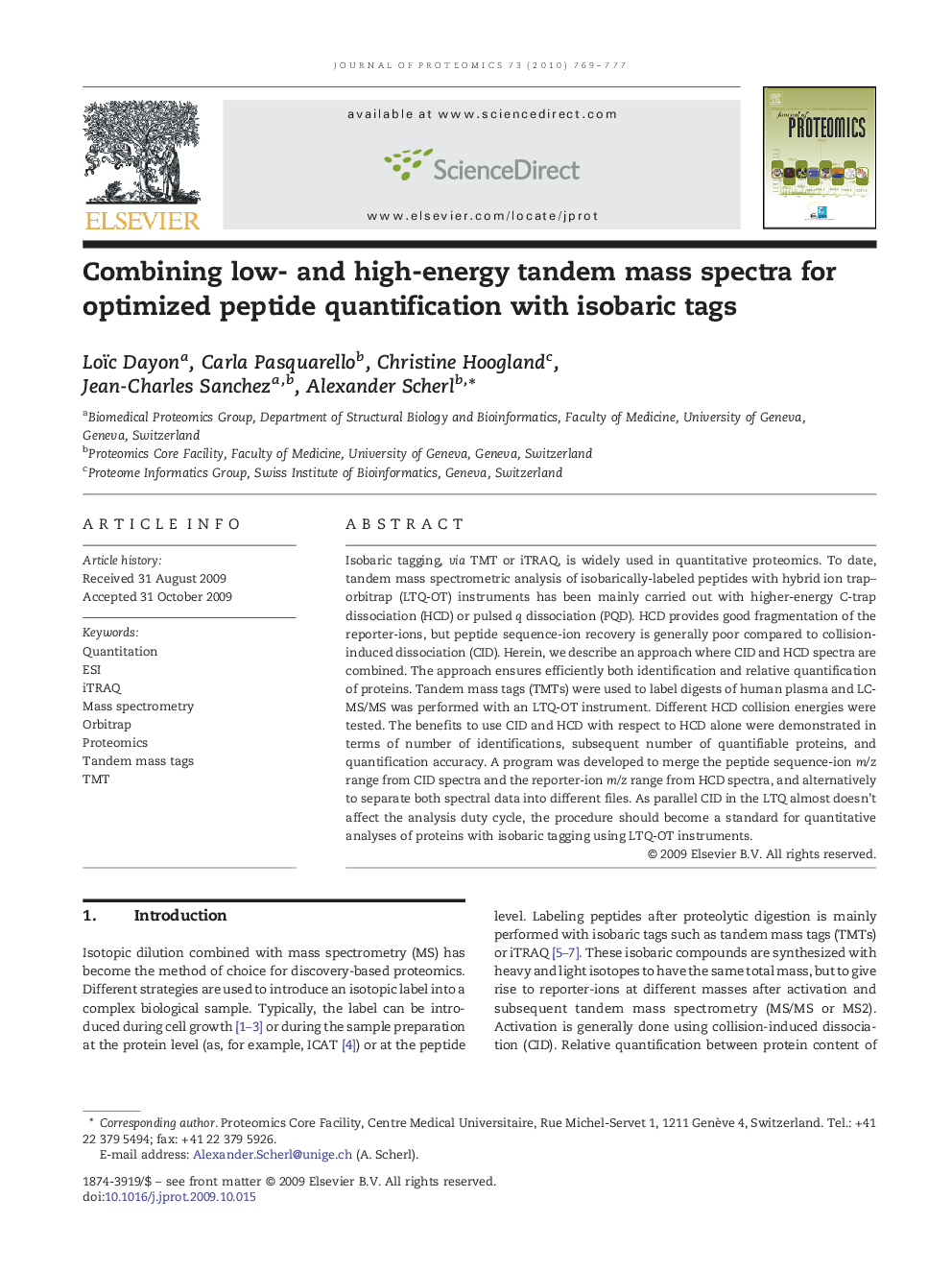| کد مقاله | کد نشریه | سال انتشار | مقاله انگلیسی | نسخه تمام متن |
|---|---|---|---|---|
| 1225860 | 968255 | 2010 | 9 صفحه PDF | دانلود رایگان |

Isobaric tagging, via TMT or iTRAQ, is widely used in quantitative proteomics. To date, tandem mass spectrometric analysis of isobarically-labeled peptides with hybrid ion trap–orbitrap (LTQ-OT) instruments has been mainly carried out with higher-energy C-trap dissociation (HCD) or pulsed q dissociation (PQD). HCD provides good fragmentation of the reporter-ions, but peptide sequence-ion recovery is generally poor compared to collision-induced dissociation (CID). Herein, we describe an approach where CID and HCD spectra are combined. The approach ensures efficiently both identification and relative quantification of proteins. Tandem mass tags (TMTs) were used to label digests of human plasma and LC-MS/MS was performed with an LTQ-OT instrument. Different HCD collision energies were tested. The benefits to use CID and HCD with respect to HCD alone were demonstrated in terms of number of identifications, subsequent number of quantifiable proteins, and quantification accuracy. A program was developed to merge the peptide sequence-ion m/z range from CID spectra and the reporter-ion m/z range from HCD spectra, and alternatively to separate both spectral data into different files. As parallel CID in the LTQ almost doesn't affect the analysis duty cycle, the procedure should become a standard for quantitative analyses of proteins with isobaric tagging using LTQ-OT instruments.
Figure optionsDownload high-quality image (475 K)Download as PowerPoint slide
Journal: Journal of Proteomics - Volume 73, Issue 4, 10 February 2010, Pages 769–777